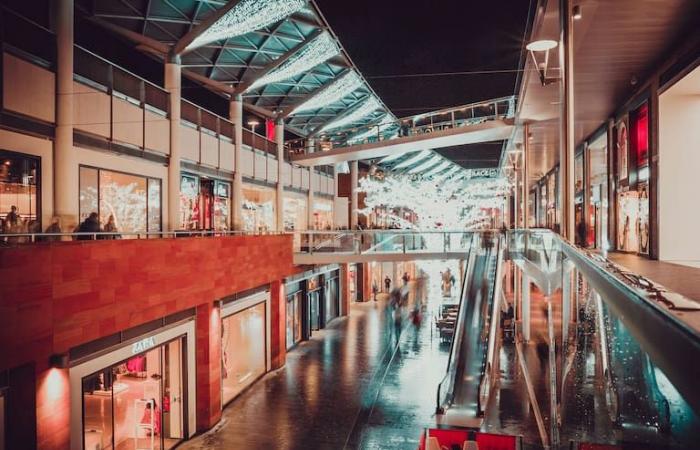Hear
Although it may be a detail that most visitors overlook, he architectural design of most modern shopping centers hides a carefully planned strategy to motivate everyone to buy without distractions And this has nothing to do with bright neon signs or bigger sale signs, but with something that would seem to be more insignificant: the absence of windows outward.
In addition to boost customer consumption by avoiding stimuli from outside such as the weather or the time of day, another of the main reasons why shopping malls don’t have windows It is to take advantage of the wall space to place the largest number of shelves and display cases, allowing businesses to display more products and, consequently, increase their sales.
Burt Flickingerretail expert and director of the consulting firm Strategic Resource Group, detailed in an interview with cnn that “Less windows and more walls mean more space for retailers to add shelves and bars to store their products and maximize sales per square foot.”
Previously, the academic of Management, Marketing and Tourism at the University of Innsbruck, in Austria, Mathias Streicherhad already explained to Business Insider that the cost of land in shopping centers becomes the main cause of the lack of natural light: “Space is extremely expensive, especially in urban centers and that is why it should be used to the maximum. Large vertical windows are almost impossible, because most of the space is taken up by large shelves.”
As if this were not enough, the need to make a efficient climate control is another important factor in avoiding large air and light inflows in shopping centres. Windows can provide a considerable amount of loss of energysince they allow heat exchange in summer and heat output in winter, which is why the shoebox-like design began to become popular during the energy crisis of the 70s, when energy efficiency became a priority. priority.
With the passage of years and technological advances, The relevance of these windowless shopping center designs is questionedIn 2002, a study by the National Renewable Energy Laboratory in Colorado, United States, concluded that people who spend a long time in a “black box with artificial light” and hermetically closed, they could have anxious feelings and sooner or later they will want to leave, so he recommended natural light.
As an example of these good practices, they referred to the case of the Big Horn home and construction store, located in Silverthorne, Colorado, which was one of the first commercial buildings in the US to install “a computer system that automatically balances ventilation and lighting levels to guarantee customers optimal shopping comfort,” in addition to being powered by solar energy panels.
The architect Michaela von Baumgarten told to Business Insider that some companies, such as the Aldi supermarket chain in Germany, undertake renovation projects for their stores to take advantage of sunlight and thus reduce spending on artificial lighting, which consists of glass with technology that filters radiation so that it does not affect the products on the shelves while allows considerable savings in electricity bills.
Another example of the change in the paradigm is the American Dream Mall in East Rutherford, New JerseyUnited States, which was inaugurated in 2019 and surprises with its incorporation of natural light elements in their design. However, these cases are still an exception, as most shopping malls maintain a windowless design for the reasons mentioned above.
THE NATION


